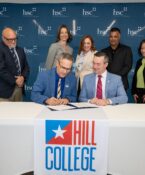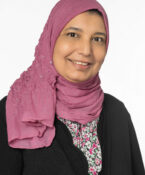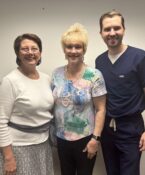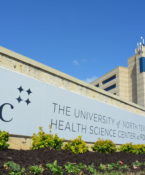Doctors, nurses, pharmacists and clergy learn together in ER simulation
Classroom lectures gave way to hands-on practice Nov. 30 as student doctors and nurses, clergy and pharmacists worked shoulder-to-shoulder in the UNTHSC Patient Simulation Lab to "save" a robotic manikin in cardiac arrest.
It was the first collaborative, interprofessional event for students from the Texas College of Osteopathic Medicine and TCU’s Harris College of Nursing and Health Sciences, as well as representatives of John Peter Smith Hospital’s chaplaincy program and UNTHSC’s soon-to-open System College of Pharmacy.
The scene looked and sounded like a real ER, with some students acting the part of distraught relatives. When the "patient’s" monitor flat-lined, the "ill" man’s "wife" screamed at a TCOM student doctor, "Get in there and do something!" then collapsed on the floor.
Another doctor instructed a nurse to begin CPR on the patient. While one nurse compressed the manikin’s chest, another squeezed a ventilator bag and yet another prepared "epinephrine" supplied by a Pharmacy faculty member.
Students and faculty called the drill highly beneficial. "We only get to collaborate once a week, and that’s in actual clinics or hospitals," said student nurse Clinton Stephens. "We need more of these simulations."
Said TCOM third-year student Justin White, "For the past two years we medical students have taken turns acting the part of nurses during simulations, but this is far more realistic."
Later, the students and faculty identified successes and challenges in debriefing sessions. Damon Schranz, DO, UNTHSC Associate Professor of Family Medicine, told students that the take-aways include:
- Communicate clearly. Speak loudly and to the entire team.
- If you are in charge of the incident, be a leader.
- Appoint one team member to handle family members gently but firmly.
Harris College’s Diane Hawley, RN, PhD, called the exercise a very useful learning experience for her students. Plans are in the works to hold collaborative simulation sessions up to four times annually, said David Farmer, PhD, UNTHSC Assistant Professor of Internal Medicine, who is taking on a new role as Director of Interprofessional Practice.
An interprofessional course is being designed, likely on the history of medicine, said Roy Martin, DMin, MDiv, UNTHSC Assistant Professor of Medical Education. Students of nursing, medicine, ministry, pharmacy and perhaps physician assistant studies will meet in the same classroom. "They will work together; it’s better if they learn together," Martin said.
See more photos from the event on the UNTHSC Flickr page.






Social media